Opinion
Trudeau’s Winnipeg Whitewash – A Masterclass in Diversion and Disconnection
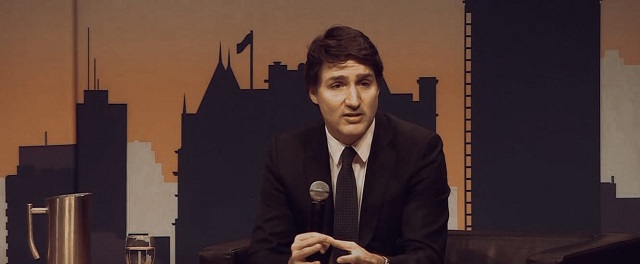
From The Opposition with Dan Knight
As Canada grapples with soaring housing costs and a quality of life crisis, the Prime Minister’s narrative on immigration & multicultural success stories clashes with the lived realities of Canadians
As some of you enjoyed the comfort of Family Day, perhaps some of you noticed Justin Trudeau making the rounds in Winnipeg – (Justin Trudeau Fireside Chat at Winnipeg Chamber of Commerce – February 16, 2024), where he found quite the fan in Loren Remillard of the Winnipeg Chamber of Commerce. It seems Remillard was all too eager to extend a metaphorical hand, fishing for tax dollars to prop up their projects.
Oh, let’s dissect the masterful art of political deflection and diversion, shall we? Justin Trudeau, spun a narrative so disconnected from the reality Canadians live in, it’s almost an art form. He lauds Toronto and Vancouver as paragons of multicultural success, cities thriving under the weight of their diversity. But here’s the catch folks—the reality on the ground, as reported by Stats Canada, tells a story that’s anything but rosy for the residents of these supposed utopias.
When we turn our gaze to the real impact of his government’s immigration policies on the ground, the picture is starkly different. Toronto and Vancouver, the benchmarks of Trudeau’s immigration success story, are in fact cities where residents report a lower quality of life than their provincial counterparts. Why? Because amidst the fanfare of diversity and inclusion, the basic needs of the citizens—like feeling a sense of belonging, life satisfaction, and mental health—are being sidelined.
Let’s not forget the elephant in the room Trudeau casually mentioned—2 million temporary residents flooding into Canada. This isn’t just a number; it’s a tsunami of demand in addition to the Liberal 500k target per year of permanent resident hitting a housing market already gasping for air, driving rents and shelter costs to astronomical heights. And Trudeau’s response? A shrug of the shoulders and a diversion to talk about measures with Mexico or the plight of international students. While these issues merit attention, they dance around the core issue: a government more obsessed with its global image than the welfare of its citizens.
The audacity to claim that Toronto and Vancouver are thriving under his policies, while Stats Canada directly contradicts this with evidence of declining quality of life, is nothing short of political theater. It’s a sleight of hand designed to distract from the harsh reality—that his government’s approach to immigration and temporary residents is contributing to a crisis of affordability and well-being in our major cities.
But amidst the spectacle, Trudeau touched on a subject that should raise eyebrows across the nation: On how his government is using immigration as a tool to “grow the economy.” Now, let’s pause for a moment to digest that, shall we?
Diving deeper, a fascinating exchange caught my ear during a Finance Committee meeting FINA-124 -February 1, 2024, where Tiff Macklem of the Bank of Canada offered some candid insights. When prodded by Mr. Jasraj Singh Hallan, Macklem conceded that the government’s spending spree and the Bank’s efforts to stabilize our economy were essentially at loggerheads. Here we have the Trudeau administration, pushing fiscal policies that seem to sprint in the opposite direction of monetary sanity.
Macklem went on, outlining that yes, government spending is contributing to growth, but let’s be clear about the kind of growth we’re talking about here. It’s one that barely keeps pace with population increases, teetering on the edge of potential. And with government spending poised to climb even higher, we’re flirting dangerously close to exacerbating inflation, rather than reining it in.
Senior Deputy Governor Carolyn Rogers chimed in with a stark reminder of the housing market’s woes. Despite interest rate hikes, which traditionally cool down housing prices, Canada’s chronic housing shortage keeps prices stubbornly high. The result? A housing affordability crisis that’s squeezing Canadians tighter than ever, exacerbated by an immigration policy that is throwing fuel on the fire of demand without addressing the urgent need for supply.
This is the picture Trudeau’s policies paint for Canada: a nation where the cost of living climbs ever higher, where the dream of homeownership slips further away for the average citizen, and where economic growth strategies seem disconnected from the realities on the ground. It’s high time for a reality check, a moment to ask ourselves whether these policies truly serve the best interest of Canadians or merely the political agenda of those in power.
Indeed, the root of the issue is staring us right in the face—supply problems are driving costs through the roof. Yet, it seems as though there’s a conspiracy of silence in the House of Commons; no one dares to utter the truth that unchecked immigration is exacerbating these supply woes, sending shelter costs soaring. Let’s dive into the latest from Stats Canada to unravel the narrative everyone is thriving under Justin Trudeau.
First off, let’s talk about renters. According to this report, if you’re renting, your quality of life isn’t just on the lower rung; it’s plummeting. Renters are staggering under the weight of financial pressures unheard of for homeowners, feeling the pinch of record-low vacancy rates and rent hikes that would make your head spin. Over 15 percentage points more likely to struggle financially and over 11 points less likely to experience life satisfaction.
But the plot thickens when we look at the younger Canadians, those aged 15 to 54. They’re caught in a vise, with life satisfaction and mental health scores that trail behind their older counterparts. The dream of home ownership? A mirage for many, as they navigate a landscape where the very idea of paying off a mortgage seems like a relic of a bygone era. And let’s not even get started on the economic tightrope walked by residents of Toronto and Vancouver, cities where the cost of living soars as high as the skyscrapers dotting their skylines.
Now, Trudeau’s government might have you believe that policies are in place to bridge these divides, to bolster the quality of life for all Canadians. But let’s be real—the evidence suggests otherwise. With renters and younger generations buckling under financial strains and cities like Toronto and Vancouver becoming enclaves of the unaffordable, the narrative being spun by the current administration seems more fiction than fact.
Consider the financial strain laid bare by these statistics: a significant portion of Canadians are finding it increasingly difficult to meet their financial needs, with shelter costs consuming a lion’s share of their income.
In a landscape marked by disparities in quality of life we’re left with a pressing question: where does the path forward lie?
Let’s cut to the chase, folks. The latest 338 polling data isn’t just a blip on the political radar; it’s a resounding bell tolling for the end of the Liberals’ reign, inching closer to losing their official party status. Why, you might ask? It’s simple: Justin Trudeau’s legacy is one of profound ineptitude, a legacy that has systematically failed Canadians at every turn. When Trudeau touts his housing policies, claiming to increase rentals, remember the cold, hard facts from Stats Canada—he’s not building homes; he’s crafting a nation with a diminished quality of life. That’s the Trudeau vision for Canada.
And let’s not overlook the audacity of his actions—jetting off to Jamaica with a hefty $162,000 bill footed by you, the taxpayer. It seems Trudeau’s concern for your quality of life evaporates faster than a Liberal MP can devour lobster in Malaysia. Meanwhile, ordinary Canadians are left to scrounge at food banks. But hey, as long as the political elite get their fill, right?
SNC-Lavalin was just the beginning, the canary in the coal mine signaling the avalanche of corruption set to spill out from Trudeau’s government. WE Charity, the Trudeau Foundation, Chinese interference, ArriveScam… the list of scandals under Trudeau’s watch is as long as it is disgraceful. These aren’t mere footnotes in history; they’re the defining features of his tenure.
Remember the uproar over a $16 orange juice under Harper? That was considered the height of scandal, a benchmark of accountability. Fast forward to today, and this government can’t even spell ‘ethics,’ let alone practice it.
So, my fellow Canadians, as we look ahead to the next election, we’re presented with a golden opportunity—a chance to reset the narrative and send a clear message to the liberal elites that we’ve had enough of their disdain for the average citizen. I, for one, will be cheering on the red wedding of Canadian politics because the liberal standard is not just detrimental to your well-being; it’s an affront to all of Canada. It’s time to say enough is enough and reclaim the Canada we know and love—a Canada of integrity, accountability, and true north strong and free.
Brownstone Institute
Musk Wins Latest Censorship Battle in Australia
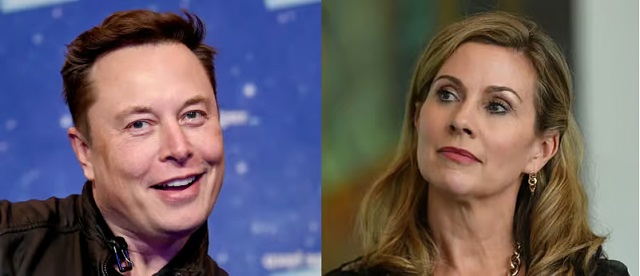
US billionaire Elon Musk, Australian eSafety Commissioner Julie Inman Grant
From the Brownstone Institute
BY
Can Australia’s eSafety Commissioner block content globally on demand? Not today, ruled the Australian Federal Court, in a win for Elon Musk’s social media platform X.
In a decision on Monday, Justice Geoffrey Kennett refused to extend a temporary injunction obtained by eSafety last month, which forced X to remove footage of the Wakeley church stabbing, an alleged religiously motivated terror attack.
Under the Online Safety Act (2021), the eSafety Commissioner, Julie Inman Grant, has the authority to order removal of such ‘class 1 material’ within Australia under threat of hefty fines.
eSafety argued that X had not gone far enough to block the content from Australians, as a geo-block can be circumvented by a VPN. X argued that eSafety was effectively seeking a global ban on content, straying outside of the Australian online harm regulator’s jurisdiction.
eSafety applied to the Federal Court to extend its temporary injunction against X, with a hearing taking place on Friday 10 May. The temporary injunction was due to expire at 5pm on Friday, but was extended to 5pm Monday—to allow time for Justice Kennett to deliver a decision on the matter.
In his decision, Justice Kennett held that X had taken “reasonable” steps to block the stabbing content as required under Australian law, and that eSafety’s request for a global ban was not reasonable.
Therefore, “The orders of the court will be that the application to extend…is refused,” said Justice Kennett, meaning that as of 5pm Monday, the injunction is no longer effective.
In a statement on the Federal Court decision, eSafety said that the matter will return to Court for a case management hearing on Wednesday, 15 May.

“The application for this injunction should have never been brought,” said Dr Reuben Kirkham, Co-Director of the Free Speech Union of Australia (FSU) in a statement, questioning the validity of the Commissioner’s bid to enact a global content ban on X. “The eSafety Commissioner is overreaching and behaving more like an activist than a responsible public servant.”
Dr Kirkham, who was present for the hearing, told Dystopian Down Under that he counted 12 lawyers present (seven for X, five for eSafety), which, if eSafety is ordered to pay costs, will lump taxpayers with “a considerable amount of unnecessary legal costs.”
Digital civil liberties nonprofit the Electronic Frontier Foundation (EFF) echoes FSU Australia’s position, stating that, “no single country should be able to restrict speech across the entire internet,” and likening the Commissioner’s actions to “[using] a sledgehammer to crack a nut.”
An affidavit submitted by the EFF to the eSafety vs. X proceedings called for the Court to consider the international impact that a ruling in eSafety’s favour would have in setting a precedent for allowing one country to enforce content bans on citizens of other countries.
“If one court can impose speech-restrictive rules on the entire Internet—despite direct conflicts with laws [in] a foreign jurisdiction as well as international human rights principles—the norms of expectations of all internet users are at risk,” stated the EFF in an article summarizing the affidavit.
X’s Global Government Affairs posted about the hearing, stating, “We’re glad X is fighting back, and we hope the judge will recognize the eSafety regulator’s demand for what it is—a big step toward unchecked global censorship—and refuse to let Australia set another dangerous precedent.” At the time of publishing, no updated statement on the Judge’s decision had been issued.

Dr Kirkham calls the Commissioner’s application to extend her injunction against X “part of a pattern where the eSafety Commissioner’s office seemingly engages in gamesmanship rather than respecting the rule of law or acting as a model litigant.”
Indeed, the ruling in X’s favour comes amidst mounting controversy over the eSafety Commissioner’s ongoing battle with X, which appears to be driven partly by Julie Inman Grant’s global censorship ambitions, and partly by personal feelings.
Inman Grant, who formerly directed Twitter’s Public Policy (Australia and Southeast Asia), has repeatedly criticized Elon Musk since his purchase of the Twitter platform in 2022.
Moreover, Musk’s advocacy for a broad interpretation of free speech on the internet conflicts with Inman Grant’s professed view of free speech as a right that needs to be “recalibrated” for online spaces.
Perhaps the biggest controversy between X and eSafety centres on the highly charged and subective issue of gender ideology.
Inman Grant has enforced the removal of a string of posts on X questioning gender ideology, including one suggesting that men can’t breastfeed, and another about a trans-identified male who allegedly injured female players during a women’s football game in NSW.
In an internationally high-profile case, the Commissioner recently issued a removal notice over an acerbic gender-critical post by Canadian activist Billboard Chris, raising questions over whether the Government should be able to police opinions and censor statements of biological fact on the internet.
FSU Australia is currently involved in Administrative Appeal Tribunal proceedings on behalf of Billboard Chris (real name Chris Elston) against the eSafety Commissioner. Additionally, X has threatened to sue eSafety over the matter.

Returning to the issue of the Wakeley stabbing footage, Inman Grant’s attempt to globally ban the content has been supported by the Australian Government, which leveraged the incident to call for more censorship, including the reintroduction of an unpopular misinformation bill.
Prime Minister Anthony Albanese has also responded to calls to address violence against women by proposing to further expand eSafety’s budget and remit, which could see deep fake pornography and “other misogynistic material” censored by the regulator.
No one will argue against explicit pornography being blocked from children’s view, but it is around the grey edges of definition creep on terms like ‘harm,’ ‘adult cyber abuse,’ and ‘misogynistic material’ where disagreements will undoubtedly kick off.
In a move of ‘no confidence’ against eSafety, FSU Australia has launched a petition to abolish the office of the eSafety Commissioner altogether, arguing that a combination of parental controls and platform incentives will suffice in keeping children safe on the internet.
A more moderate approach may be to curtail eSafety’s remit to its original function of dealing with child abuse content (as in 2015), and revenge porn (as in 2017), before the regulator’s purview and powers were significantly expanded with the introduction of the Online Safety Act in 2021.
However, in the media and political conversation, there is little appetite for a moderate approach, as conveyed in a viral guest appearance by media personality Tracey Holmes on a recent episode of the ABC’s failing show Q+A.
Calling out the double standard in the censorship conversation, Holmes told the studio audience,
“I don’t agree with any kind of censorship in a general sense. I don’t think Elon Musk is contributing to any social cohesion split inside this country. I think our mainstream media is doing enough of that. I think our politicians do enough of that…
“Of course there are fault lines everywhere, but there’s only one way you can stop those fault lines from getting bigger, and that is to have the ability to have the town square to hear different points of view…
“And I think unfortunately we’ve been fed ‘this side or that side’ for so long, people are giving up on mainstream media, that’s why they’re tuning out. That’s why they’re going to YouTube…we have let them down.”
Hopefully, some higher-ups in the corporate media tuned in to hear what Holmes had to say.
Read more about the judge’s decision
Republished from the author’s Substack
Brownstone Institute
Enough With These Dangerous Calculations
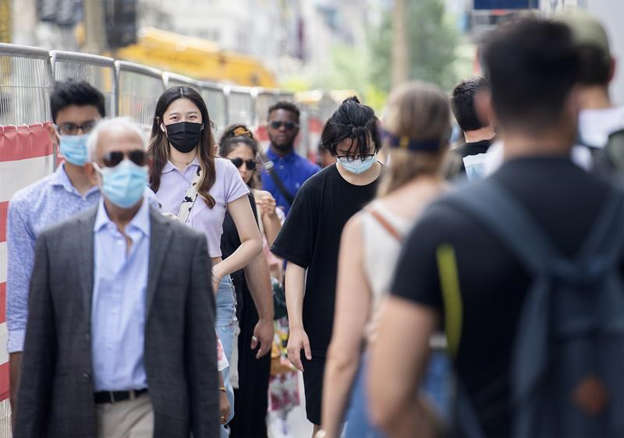
From the Brownstone Institute
BY
Now that there is more open talk about vaccine injury, we are continually assured that overall these vaccines were worth it even so. The thought always occurs: it has not been worth it for the injured. Nor is their injury lessened by the knowledge that others were helped, if they were.
What precise metric are we going to use to determine costs and benefits population-wide? Many millions were forced to take experimental injections that they did not want nor need. Many were injured and with no chance of compensation. This is gravely unjust. You don’t need to take recourse to fancy philosophical conjectures (The Trolley Problem, The Lifeboat Dilemma, The Fat Man on the Bridge, etc.) to do the utilitarian calculation.
And yet, such calculations are precisely what the defenders of society-wide pandemic interventions are citing as evidence that we can and should do it again. The costs are high, they now admit, but worth the benefit.
Well, maybe not. It’s hard to say but they will keep working on it. They will decide in due course.
This is the argument of Professor John M. Barry. His book on the 1918 flu pandemic kicked off the entire pandemic-planning industry once George W. Bush read the book flap in 2005. Barry’s new article in the New York Times raises alarms about the Avian Bird Flu, the same as the whole pandemic industry is doing right now, and makes the argument that the interventions last time were just great overall.
“Australia, Germany and Switzerland are among the countries that demonstrated those interventions can succeed,” he claims even though all three countries have been torn apart by the pandemic response that is still rocking politics and showing itself in economic decline “Even the experience of the United States provides overwhelming, if indirect, evidence of the success of those public health measures.”
What is that indirect evidence? This you won’t believe: that flu deaths dramatically fell. “The public health steps taken to slow Covid contributed significantly to this decline, and those same measures no doubt affected Covid as well.”
That’s a heck of a thing. If you burn down the house to kill the rats and fail, but happen to kill the pets, surely you have some bragging rights there.
There is indeed a big debate on why seasonal flu seems to have nearly disappeared during the pandemic. One theory is simple misclassification, that flu was just as present as always but labeled Covid because PCR tests pick up even slight elements of the pathogen and financial incentives drove one to displace the other. There is surely an element of this.
Another theory relates to crowding out: the more serious virus pushes aside the less serious one, which is an empirically testable hypothesis.
A third explanation might in fact be related to interventions. With vast numbers staying home and the banning of gatherings, there was indeed less opportunity for pathogenic spread. Even if granting that is true, the effect is far from perfect, as we know from the failure of every attempt to achieve zero Covid. Antarctica is a good example of that.
That said, and even postulating this might be correct, there is nothing to prevent the spread among the population after opening except with even worse results because immune systems are degraded for lack of exposure.
Barry concedes the point but says “such interventions can achieve two important goals.” The first is “preventing hospitals from being overrun. Achieving this outcome could require a cycle of imposing, lifting and reimposing public health measures to slow the spread of the virus. But the public should accept that because the goal is understandable, narrow and well defined.”
Fine, but there is a major glaring error. Most hospitals in the US were not overrun. There is even a genuine question about whether and to what extent New York City hospitals were overrun but, even if they were, this had nothing to do with hospitals in most of the country. And yet the grand central plan closed them all for diagnostics and elective surgeries. In major parts of the country, parking lots were completely empty and nurses were furloughed in more than 300 hospitals.
Overall, that scheme (and who imposed this?) didn’t work too well.
The second supposed benefit you can predict: shutting down buys time “for identifying, manufacturing and distributing therapeutics and vaccines and for clinicians to learn how to manage care with the resources at hand.” This is another strange statement because authorities actually removed therapeutics from the shelves all over the country even though physicians were prescribing them.
As for the supposed vaccine, it did not stop infection or transmission.
So that scheme didn’t work either. There is also something truly cruel about using compulsory methods to preserve the population’s immunological naïveté in anticipation of a vaccine that may or may not work and may or may not cause more harm than good. And yet that is precisely the plan.
The most alarming part of Barry’s article, even aside from his incorrect claim that masks work, is this statement: “So the question isn’t whether those measures work. They do. It’s whether their benefits outweigh their social and economic costs. This will be a continuing calculation.”
Again we are back to benefit vs costs. It’s one thing for a person confronting a true moral or personal difficulty to make that calculation and live with the consequences. Every philosophical problem listed above – Trolly Cars and Lifeboats – involves personal choices and single decision-makers. In the case of pandemic planning and response, we are talking about groups of intellectuals and bureaucrats making decisions for the whole of society. In the last go-round, they made these decisions for the entire world with catastrophic results.
Many hundreds of years ago and following, the Western mind decided that giving such power to elites was not a good idea. The “continuing calculation” about what costs and benefits are experienced by billions of people from compulsory impositions is not something we should risk, not even with AI (which Barry says will solve the problems next time). Instead, we generally decided that a presumption of freedom is a better idea than empowering a small elite of scientists with the power to make “continuing calculations” for our supposed benefit.
Among many problems with the scientistic scheme for elite rule in the realm of infectious disease is that the population as a whole has no way to evaluate schemes and claims made to them by the government itself. They told us terrible population-wide death would come from Covid but it turned out to be exactly what others said back in February 2020; a disease impactful mainly on the aged and infirm.
Similarly, with the bird flu, we’ve been through a quarter century of claims that half of humanity could die from it. So far, every jump from animals to humans has resulted in reparable maladies like conjunctivitis.
But let’s say the bird flu really does get bad. Should the scientists who ruled us last time be trusted to do it again? That’s Barry’s plea: he demands “trust in government.” At the same time, he wants government to have the power to censor dissent. He falsely claims that last time, “there was no organized effort to counter social media disinformation” despite vast evidence of exactly this.
More information is actually what we need, especially from dissidents. For example, Barry celebrates that dexamethasone worked against Covid. But he fails to point out that the “experts” said in February 2020 that dexamethasone should not be used. Indeed, if you followed the Lancet, you would not have used them at all. In other words, Barry’s article refutes itself simply by showing the experts were desperately wrong in this case.
And, honestly, he knows this. Every bit of it. I have no doubt that if we met for cocktails, he would agree with most of this article. But he would also quickly point out that, after all, the New York Times commissioned the article so he can only say so much. He is merely being strategic, don’t you know?
This is the problem we face today with nearly all ruling-class intellectuals. We don’t actually disagree that much on the facts. We disagree on how much of the facts we are in a position to admit. And this puts Brownstone in a very awkward position of being a venue to say publicly what most people in the know say only privately. We do it because we believe in doing so.
All of which underscores the more general point: government and its connected scientists simply cannot be trusted with this kind of power. The last experience illustrates why. We forged our societies to have laws and guaranteed liberties that can never be taken away, not even during a pandemic. It is never worth using the power of the state to ruin lives to fulfill anyone’s abstract vision of what constitutes the greater good.
-

 espionage2 days ago
espionage2 days agoThe Scientists Who Came in From the Cold: Canada’s National Microbiology Laboratory Scandal, Part I
-
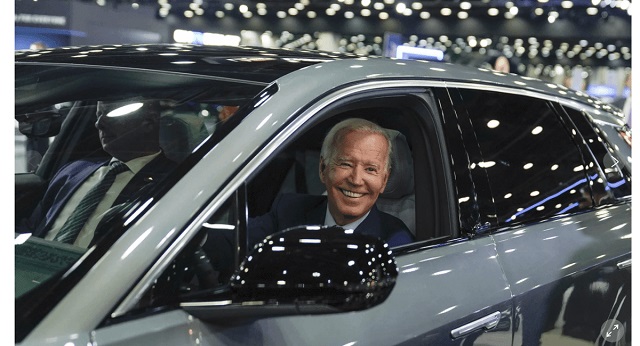
 Energy2 days ago
Energy2 days agoTech giants’ self-made AI energy crisis
-

 Frontier Centre for Public Policy2 days ago
Frontier Centre for Public Policy2 days agoThe PM as Leaf’s coach
-
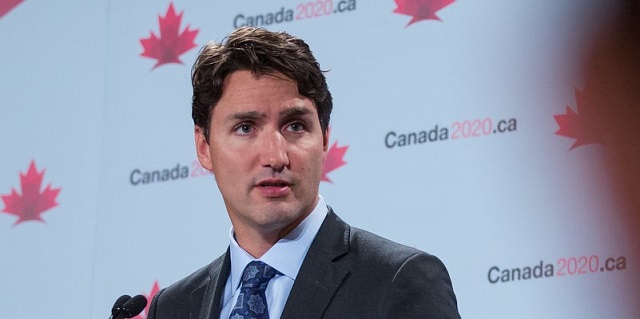
 Economy1 day ago
Economy1 day agoPrime minister’s misleading capital gains video misses the point
-
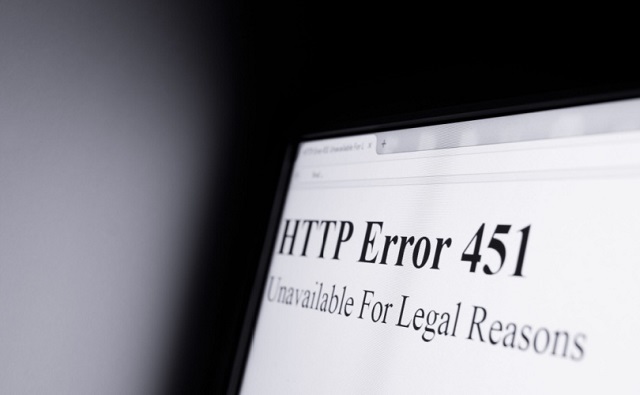
 National2 days ago
National2 days agoTrudeau’s internet censorship Bill C-11 will not be implemented until late 2025
-
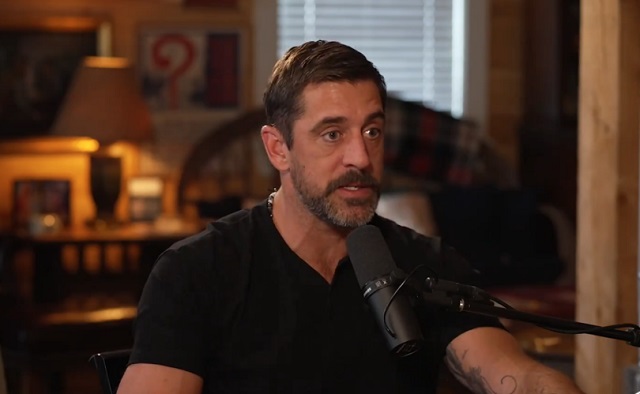
 COVID-191 day ago
COVID-191 day agoTucker Carlson and NFL star Aaron Rodgers discuss Bill Gates, COVID-19, US Deep State
-
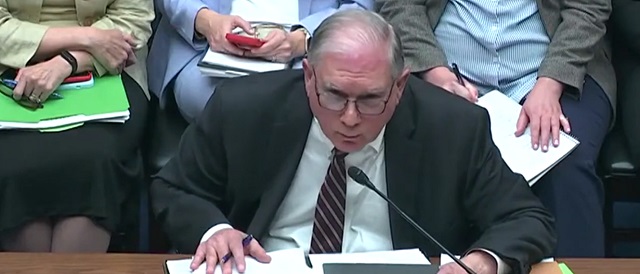
 COVID-1918 hours ago
COVID-1918 hours agoTop Fauci Aide Allegedly Learned To Make ‘Smoking Gun’ Emails ‘Disappear,’ Testimony Reveals
-

 COVID-1912 hours ago
COVID-1912 hours agoThe Vials and the Damage Done: Canada’s National Microbiology Laboratory Scandal, Part II











